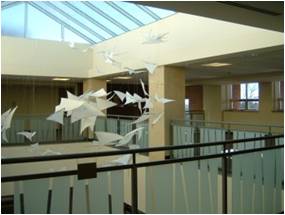Building Heating, Ventilation, and Air Conditioning (HVAC)
Heating, ventilation, and air conditioning (HVAC) accounts for approximately 44% of commercial building energy use.Source: U.S. Energy Information Administration, 2012 Commercial Building Energy Survey![]() . Reduce your HVAC costs with SFTool
. Reduce your HVAC costs with SFTool
Related Topics
Cooling
Cooling is the process of keeping a building at a comfortably cool temperature during hot times. It can be done naturally, through ventilation and shading or by using refrigerants in chillers to remove heat.
Energy Performance
Assessing a building’s energy performance involves comparing its energy use to that of peers or a standard. The ENERGY STAR program provides recognized benchmarks for assessing a building’s energy performance.
Heating
Heating usually refers to the mechanical system used to heat air inside a building. There are many types of standard heating systems. Central heating is often used in cold climates to heat private houses and public buildings. Those systems contain a boiler, furnace, or heat pump to heat water, steam, or air. The heating equipment is usually located in a central location such as a furnace room in a home or a mechanical room in a large building.
Heating, Ventilating and Air Conditioning (HVAC)
Heating, ventilation, and air conditioning systems are designed to work together to maintain occupant comfort. From residential to commercial settings, HVAC systems help to keep people comfortable and healthy by maintaining good indoor air quality and comfortable temperatures.
Whole Building Design Guide | High-Performance HVAC![]()
Ventilation
Ventilation is the process of "changing" or replacing air in any space to control temperature; remove moisture, odors, smoke, heat, dust, airborne bacteria, and carbon dioxide; and to replenish oxygen. Ventilation includes both the exchange of air to the outside as well as circulation of air within the building. It is one of the most important factors for maintaining acceptable indoor air quality in buildings.

